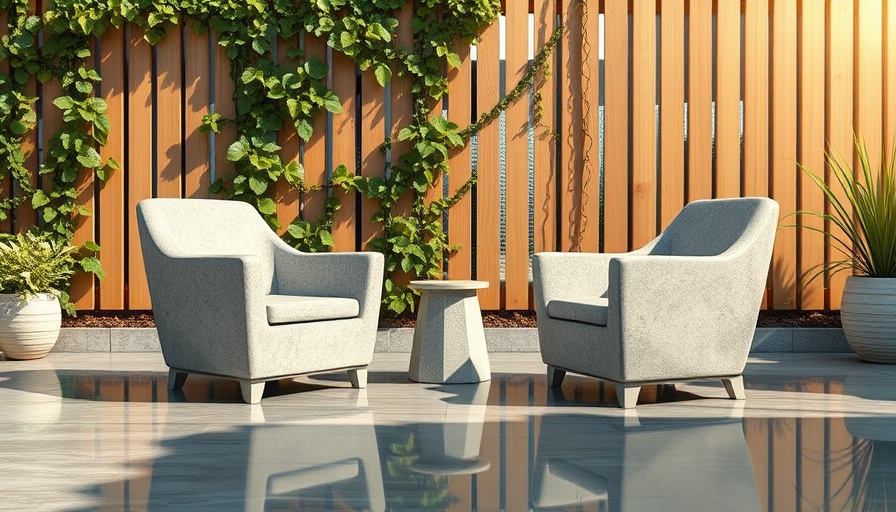
Timeless Outdoor Designs: Classic Chairs that Elevate Your Space
When it comes to outdoor living, the right furniture can transform a simple patio or garden into an inviting oasis. Designers from the 20th century not only focused on interiors but also made their mark in outdoor environments, blending aesthetics with durability. Let’s explore some of the most iconic outdoor chair designs that have stood the test of time and continue to resonate with homeowners today.
The Legacy of Famous Designers
Many notable designers ventured into crafting furniture specifically crafted for outdoor use. The Eameses, Verner Panton, and Charlotte Perriand are just a few who took timeless designs outdoors. For instance, the iconic Eames Wire Outdoor Chair was a result of their experimentation with materials—bent and welded wire—creating a sleek, stylish piece that is as functional as it is beautiful. Priced at $795, it’s a worthwhile investment for anyone looking to enhance their outdoor seating.
Why Classic Outdoor Furniture Matters
Choosing outdoor furniture is about more than aesthetics; it reflects a lifestyle. Classic designs combine functionality and fashion to create spaces for relaxation and social connection. As we navigate through the busy pace of life, having an inviting outdoor area encourages us to pause and enjoy the moment. For example, the BK11 Lounge Chair, fashioned from oiled teak and retaining its robust character outdoors, costs $1,415, yet offers enduring comfort and style.
Examples of Iconic Chairs to Consider
1. Antelope Standard Chair by Ernest Race: Introduced in 1951 and made from molded plywood and powder-coated steel, this chair is a blend of elegance and durability. Available for £378, it serves as a beautiful focal point in any outdoor setting.
2. Bertoia Diamond Chair: Originally unveiled in 1952, this masterpiece's minimal design complements lush outdoor environments while being sturdy enough to withstand limited exposure to the elements, priced at $1,848.
3. Panton Chair: Designed with versatile usage in mind, Panton's colorful polypropylene chair can seamlessly transition from indoor to outdoor settings, available for $505. Its ergonomic shape and vibrant colors add life to any space.
Decisions You Can Make With This Information
When considering outdoor furniture, think about your space and how these classic designs can enhance it. Reflect on your personal style—do you prefer sleek modernity or traditional warmth? Ensure that the pieces are not only visually appealing but also comfortable and sturdy enough for outdoor living.
Practical Tips for Outdoor Furniture Maintenance
Maintaining outdoor furniture is essential to ensuring longevity and appearance. Here are a few tips to keep your classics looking fresh:
- Regular Cleaning: Use mild soap and water to remove dirt and debris. Avoid harsh chemicals that could damage the finish.
- Proper Storage: When not in use, store furniture indoors or cover it with protective fabric to shield it from the elements.
- Seasonal Care: Periodically check for signs of wear and tear, and treat wooden pieces with appropriate oils to prevent drying and cracking.
Final Thoughts: Elevate Outdoor Living Spaces
Classic outdoor chairs present a unique opportunity to blend history with functionality. They not only serve as seating but also as conversation pieces, enhancing the charm and ambiance of your outdoor areas. By investing in these timeless designs, you create a welcoming environment that invites relaxation and enjoyment.
Ready to transform your outdoor space? Discover the full range of timeless pieces that can make a difference. Don’t just settle for any furniture—choose designs that inspire and elevate your outdoor living experience!
 Add Row
Add Row  Add
Add 




Write A Comment